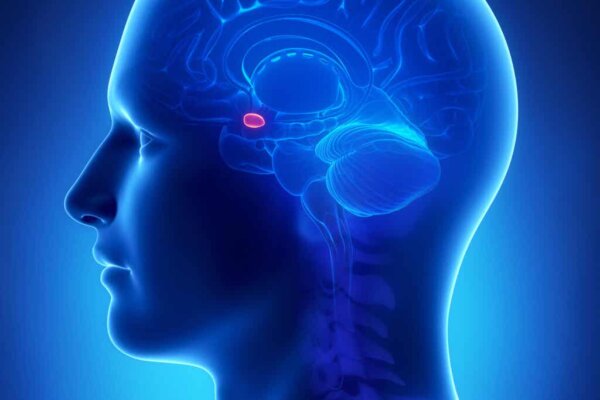The concept of ataraxy dates back to ancient Greece and the Stoics. It means that you shouldn’t allow anything to affect you and that you should remain serene in the face of adversity. A state of mind free from fear, anxiety, anger, and frustration seems idyllic. After all, who wouldn’t like to live with this peace of mind?
The truth is that this reality has little to do with health or even logic. For example, the Grimm Brothers’ The Story of the Youth Who Went Forth to Learn What Fear Was spent a good part of his life trying to get to know that emotion that so defines humans. In fact, excluding an emotion, whatever it may be, from the emotional register can lead to serious consequences.
This is why ataraxy, far from being an inspiring concept, might actually be a disorder. Moreover, it might even be neurological. Anguish, uneasiness, and restlessness are bothersome and even disturbing but fulfill an indisputable purpose in terms of survival.
“I had made her so unhappy that she had developed a sense of humor.”
-Rabo Karabekian-
The definition of ataraxy and its symptoms
Greek philosophy defined ataraxy as imperturbability. Figures like Democritus or Heraclitus considered this disposition to reduce passion and considered a serene and impenetrable behavior synonymous with enlightenment and nobility of spirit.
This perspective of behavior and attitude arose with the Epicureans, the Stoics, and the skeptics. In this regard, research conducted by Dr. James Warren of Cambridge University indicates that Epicureans considered ataraxia to be synonymous with mental well-being. This is because it could “uproot” fears from the mind.
Seen in this light, more than one would conceive it as encouraging and accurate. Who wouldn’t like to live in a permanent state of nonchalance, in a psychological sphere where nothing would affect you?
However, the truth is that you wouldn’t be human if you were to react to life’s adversities in this way. You’d be a zombie. The inability to react to environmental events or the absence of fear would, in many cases, define a neurological disorder.
What does a person with ataraxy look like?
This condition isn’t in the Diagnostic and Statistical Manual of Mental Disorders (DSM-V). However, it can be a symptom of a neurological problem, as we mentioned above. Several brain alterations correlate with this reality and its symptoms:
- Passive behavior and the inability to react to environmental stimuli.
- A person with medical ataraxia doesn’t show changes in their mood. Thus, they’re always in a state of affective flattening in which they neither show ups nor downs, joy, fear, or disenchantment.
- They don’t manifest frustration. In other words, they calmly and almost indifferently experience events such as making mistakes or not being able to reach a goal, for example.
- They neither feel guilt nor feel responsible for their actions.
- Likewise, it’s common that they wouldn’t respect limits and aren’t aware of risky behavior.

The origin of ataraxy
Clinical or medical ataraxia is the extreme form of philosophical ataraxy. In other words, one can maintain a calm and cool character in the face of life’s events. However, it’s expected, and recommended, to experience joy, guilt, fear, anguish, the effusiveness of love, and, from time to time, even the uneasiness of sadness.
These emotions allow you to adapt to life’s unexpected events, as they’re valuable learning tools. However, someone with clinical ataraxia shows a clear maladaptive passivity. This condition defines people who are unable to react to their environment socially, occupationally, and emotionally.
What’s the origin of this problem?
The neurological origin of ataraxy
Multiple triggers could explain ataraxy. The most common are traumatic shocks to the frontal area of the brain and cerebrovascular accidents. We should also mention that Urbach-Wiethe causes a total absence of fear.
This condition arises as a result of a lesion or atrophy of the amygdala. As you know, this region regulates part of your emotions, being fear and the feeling of alertness the most common ones. Thus, the amygdala immediately sends information to the cerebral cortex when confronted with danger.
This area applies a cognitive filter to objectively assess the real risk. However, a person with ataraxy isn’t able to carry out any of these processes. Thus, it’s likely that the Grimm Brothers’ The Story of the Youth Who Went Forth to Learn What Fear Was actually suffered from an amygdala alteration.
Ways to Be Kind to Difficult People
The post Ataraxy: the State of Serene Calmness appeared first on Exploring your mind.


















Comments